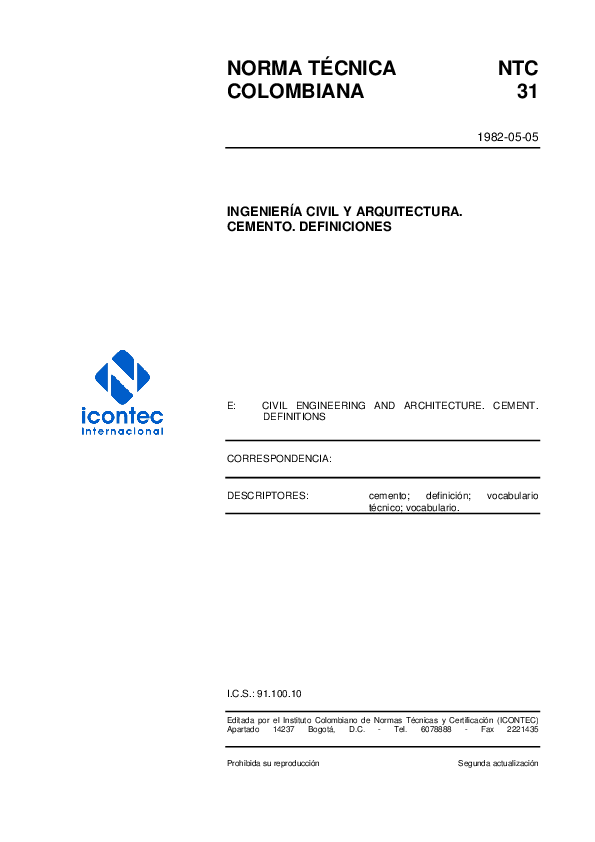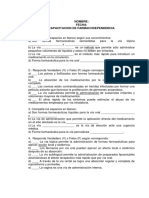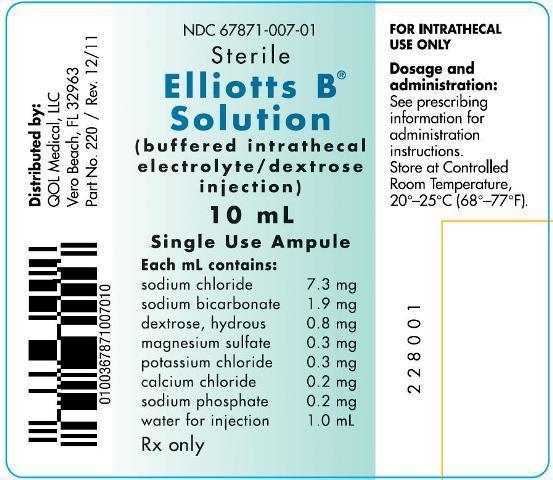
2/18/2014 Calcium sulphate for use as a source of calcium in food supplements - Scientific opinion of the Scientific Panel on Food Additives and Nutrient Sources added to food
AND CRYSTALLISATION CHALLENGES
AND CRYSTALLISATION CHALLENGES. Chloramination, The Science Methods of Application & Other Stuff. Ron Hidu, PE . COMMITMENT & INTEGRITY DRIVE RESULTS 000000.00 2. Ammonia Source Naturally Occurring Anhydrous Ammonia Aqueous Ammonia Ammonium Sulfate. COMMITMENT & INTEGRITY DRIVE RESULTS. 000000.00 3. Aqueous Ammonia – NH. 4. OH • H. 2. O Ammonium Hydroxide 19, 25, 40 %...typically 19% SG = 0.926 …, calcium sulphate (gypsum) which helps improving the soil structure, drainage and aeration. A natural mineral, calcium sulphate benefits from several decades of safe use. It is also suitable for organic growers. Characteristics of the soil Formed over a long period of time, soil is the biologically active material that covers much of the.
The HubercarbВ® Q-FSMA Calcium Carbonate Series Formulated Specially for Animal Feed and Nutritional Supplementation . Huber's ground calcium carbonate (GCC) is your ideal calcium choice for your next animal feed or nutrition supplement formulation to achieve optimal health for farm animals. SAFETY DATA SHEET MONOCALCIUM PHOSPHATE/DICALCIUM PHOSPHATE FEED GRADE Page 5 of 5 SECTION 12: ECOLOGICAL INFORMATION 12.1.Toxicity Monocalcium Phosphate/Dicalcium Phosphate is not toxic for environment. Product does not produce toxic compounds either with the substances presents in the environment, nor in combination with water.
Calcium carbonate Calcium phosphate Calcium silicate Calcium sulfate Calcium hydroxide Loss on ignition Magnesium phosphate Magnesium hydroxide Magnesium silicate Silica Alumina Oil Iron oxide Sodium salts Copper Other metals Coagulation-type treatment High Usually less than 15% Usually less than 3% None None Usually less than 5% None Moderate European Union. Register of Feed Additives. pursuant to Regulation (EC) No 1831/2003 . Annex I: List of additives . The information contained in this publication does not necessarily reflect the opinion or the position of the European Commission. Neither the European Commission nor any person acting on its behalf is responsible for any use that might be made of the following information
Approved by Dr. Andrea Middleton - Calcium sulfate, or gypsum, is a naturally-occurring form of calcium. Aside from minor side effects when consumed in excess, there’s no evidence that it’s bad for you. chloride, ammonium sulfate, aluminum sulfate, magnesium sulfate, calcium chloride, and commercial acid treated feeds) cause rations to be more acidic, increasing absorption of dietary calcium and stimulating mobilization of bone calcium due to improvement in parathyroid hormone receptor sites (NRC, 2001). When more calcium is available, the
Chloramination, The Science Methods of Application & Other Stuff. Ron Hidu, PE . COMMITMENT & INTEGRITY DRIVE RESULTS 000000.00 2. Ammonia Source Naturally Occurring Anhydrous Ammonia Aqueous Ammonia Ammonium Sulfate. COMMITMENT & INTEGRITY DRIVE RESULTS. 000000.00 3. Aqueous Ammonia – NH. 4. OH • H. 2. O Ammonium Hydroxide 19, 25, 40 %...typically 19% SG = 0.926 … Approved by Dr. Andrea Middleton - Calcium sulfate, or gypsum, is a naturally-occurring form of calcium. Aside from minor side effects when consumed in excess, there’s no evidence that it’s bad for you.
Inorganic chemical compound with the formula CaSO 4. Alternative spelling: calcium sulphate (UK). Calcium Sulfate. Gypsum is the common name of the mineral calcium sulphate dihydrate, which is mined in various places around the world and now is also being produced in a relatively pure form as a by-product of sulphur dioxide removal processes for power station exhaust gases.
calcium sulphate (gypsum) which helps improving the soil structure, drainage and aeration. A natural mineral, calcium sulphate benefits from several decades of safe use. It is also suitable for organic growers. Characteristics of the soil Formed over a long period of time, soil is the biologically active material that covers much of the Calcium sulfate dihydrate (alternative CAS 10101-41-4) (CAS 13397-24-5) Aquatic Fish LC50 Fathead minnow (Pimephales promelas) > 1970 mg/l, 96 hours Persistence and degradability Calcium sulfate dissolves in water forming calcium and sulfate ions. Bioaccumulative potential Bioaccumulation is not expected. Mobility in soil No data available.
Calcium sulfate (or calcium sulphate) is the inorganic compound with the formula CaSO 4 and related hydrates. In the form of γ-anhydrite (the anhydrous form), it is used as a desiccant. One particular hydrate is better known as plaster of Paris, and another occurs … Calcium sulfate (or calcium sulphate) is the inorganic compound with the formula CaSO 4 and related hydrates. In the form of γ-anhydrite (the anhydrous form), it is used as a desiccant. One particular hydrate is better known as plaster of Paris, and another occurs …
Phosphate (MAP), Diammonium Phosphate (DAP), or Triammonium Phosphate (Liquid Poly-Ammonium Phosphate 10-34-0) Filtration is used to remove Calcium Sulfate, Silica, Fluoride, and other suspended solids from the initial Phosphoric Acid. Worldwide production … Feed at the rate of 3 lb per 100 lb of body weight per day to provide 22.7 mg decoquinate per 100 lb of body weight (0.5 mg/kg) per day. Feed for at least 28 days during periods of coccidiosis exposure or when experience indicates that it is likely to be a hazard. ShowTec AminoGain Goat DC Goat Daily Feeding Body Weight (lb) Rate (lb) 40 1.2 60
SAFETY DATA SHEET MONOCALCIUM PHOSPHATE/DICALCIUM PHOSPHATE FEED GRADE Page 5 of 5 SECTION 12: ECOLOGICAL INFORMATION 12.1.Toxicity Monocalcium Phosphate/Dicalcium Phosphate is not toxic for environment. Product does not produce toxic compounds either with the substances presents in the environment, nor in combination with water. And intake of dry feed promotes development of the digestive tract in young animals. Ingredients: Soybean meal, corn, hominy feed, feeding oatmeal, dried whey, dehydrated alfalfa meal, linseed meal, brewer’s dried yeast, vegetable oil, fenugreek seed, anise oil, calcium carbonate, monocalcium
Calcium sulfate, a food additive used to stabilize and firm foods and regulate their acidity levels, is found in a variety of processed foods. In the amounts typically found in food and supplements, calcium sulfate isn't likely to cause adverse effects and is generally regarded as safe by the U.S. Senepol animals with low residual feed intake (high efficiency)depositlesssubcutaneousrumpfat,butthisreductionisnot accompanied by a reduction in backfat thickness and longissimus muscle area. Key Words: beef cattle, feed intake, residual feed intake Revista Brasileira de Zootecnia Brazilian Journal of Animal Science
Calcium and magnesium use in aquaculture В« Global. Hydrochloric acid is preferred when calcium sulfate, barium sulfate, or strontium sulfate scaling is a concern. Sulfuric acid increases the sulfate ion level in the RO feed, which directly increases the potential for sulfate-based scaling. Technical grade hydrochloric acid (with no additives) is typically suitable for purchase. HCl acid is, European Union. Register of Feed Additives. pursuant to Regulation (EC) No 1831/2003 . Annex I: List of additives . The information contained in this publication does not necessarily reflect the opinion or the position of the European Commission. Neither the European Commission nor any person acting on its behalf is responsible for any use that might be made of the following information.
Calcium sulfate Wikipedia
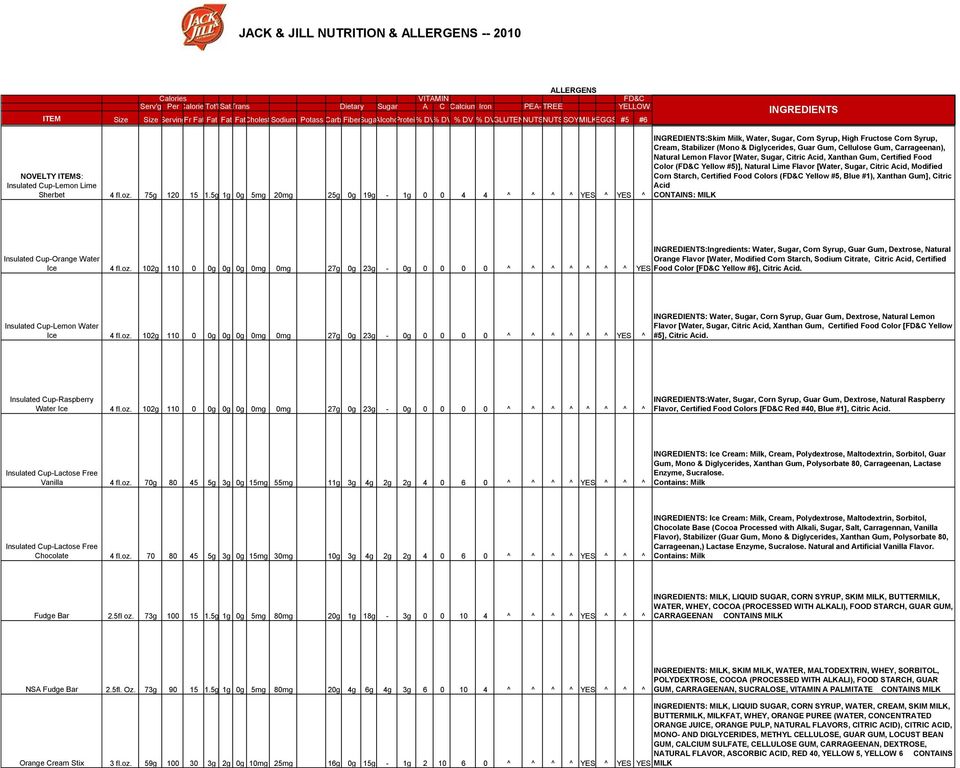
Calcium sulfate Wikipedia. Approved by Dr. Andrea Middleton - Calcium sulfate, or gypsum, is a naturally-occurring form of calcium. Aside from minor side effects when consumed in excess, there’s no evidence that it’s bad for you., Calcium Sulfate - Coarse - Bags and Totes Magnesium Sulfate (Epsom Salt) - 25 Kg Bag Calcium Sulfate - Fine - bags Potassium Chloride Limestone - Feed Grade Fine Potassium/Magnesium Sulfate Limestone - Feed Grade Coarse Sulfur Flour Magnesium Oxide 54% -50 lb Bags (New Size) PHOSPHATES 21% Monocalcium Phos - 50# Bags.
The Benefits of Calcium Sulphate Use in Soil & Agriculture. • CALCIUM Ca++ • • SULFITE SO 3 = • SULFATE SO 4 = • 2/18/2014 7 Oxygen Pitting Corrosion FEED WATER IMPELLER FEED WATER LINE CORROSION ACTIVE PITS Feed Water pH • The pH of the feed water should be above 8.5 to prevent corrosion of iron in the system • The pH of the feed water should be below 9.2, to prevent copper loss in the system • Optimum pH in the feed water, Water for livestock: interpreting water quality tests 2 NSW Department of Primary Industries, May 2014 3. Chloride Chloride has a number of functions in the body. These include the regulation of osmotic pressure and pH balance (along with sodium and potassium)..
Chemical Pretreatment For RO and NF
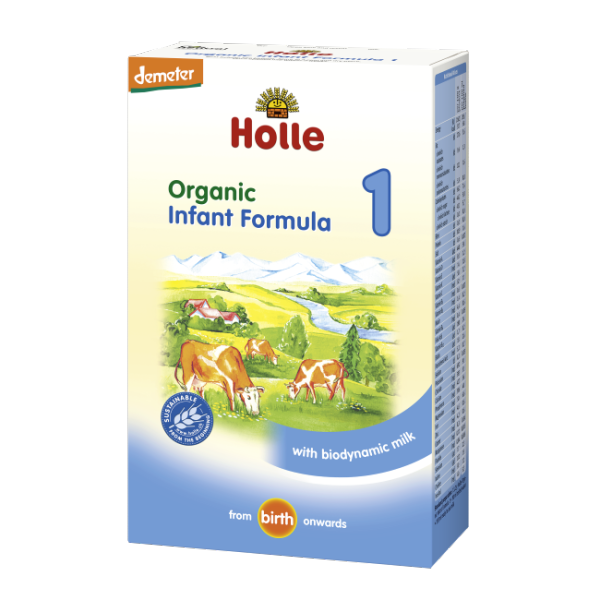
Calciumsulfat – Wikipedia. Alibaba.com offers 152 feed grade calcium sulfate products. About 23% of these are sulphate, 1% are nitrogen fertilizer. A wide variety of feed grade calcium sulfate options are available to you, such as food grade, agriculture grade, and industrial grade. Senepol animals with low residual feed intake (high efficiency)depositlesssubcutaneousrumpfat,butthisreductionisnot accompanied by a reduction in backfat thickness and longissimus muscle area. Key Words: beef cattle, feed intake, residual feed intake Revista Brasileira de Zootecnia Brazilian Journal of Animal Science.

Calcium sulfate has been used for bone substitutes for long time. Peltier et al. (1957) mixed a plaster of paris (POP), calcium sulfate hemihydrates, and water allowing to set in the mold to make column- and tablet-form calcium sulfate dihydrate. The set plaster was used to fill defects in dog bone. They observed bone regeneration as the CATALOG. 7 / 19 / 2019 jostchemical.com 2 Getting it right – down to every detail. Jost Chemical Co. is an FDA-registered cGMP manufacturer of high purity specialty chemicals for pharmaceutical, biotech, nutritional, food and other markets. For more than 30 years, Jost Chemical has been committed to providing customers with the best products and service available. We now lead the industry in
Calcium Sulfate. Gypsum is the common name of the mineral calcium sulphate dihydrate, which is mined in various places around the world and now is also being produced in a relatively pure form as a by-product of sulphur dioxide removal processes for power station exhaust gases. Calcium sulphate for use as a source of calcium in food supplements - Scientific opinion of the Scientific Panel on Food Additives and Nutrient Sources added to food
Approved by Dr. Andrea Middleton - Calcium sulfate, or gypsum, is a naturally-occurring form of calcium. Aside from minor side effects when consumed in excess, there’s no evidence that it’s bad for you. Calcium sulfate dihydrate (alternative CAS 10101-41-4) (CAS 13397-24-5) Aquatic Fish LC50 Fathead minnow (Pimephales promelas) > 1970 mg/l, 96 hours Persistence and degradability Calcium sulfate dissolves in water forming calcium and sulfate ions. Bioaccumulative potential Bioaccumulation is not expected. Mobility in soil No data available.
Aquatic animals can get calcium and magnesium both from the water and their food. Hardness usually is great enough to supply enough calcium and magnesium for aquatic animals in fertilized ponds, and in ponds with feeding, calcium and magnesium are obtained from the feed when the hardness is low. Ponds with low-alkalinity water usually have low (a) Calcium sulfate (CaSO4, CAS Reg. No. 7778-18-9 or CaSO4.2H2O, CAS Reg. No. 10101-41-4), also known as plaster of Paris, anhydrite, and gypsum, occurs naturally and exists as a fine, white to slightly yellow-white odorless powder. The anhydrous form is prepared by complete dehydration of gypsum, below 300 deg. C, in an electric oven.
Comments Off on Toxicity Profile for Calcium sulphate (1989) The anhydrous and hemihydrate forms of calcium sulphate have displayed a weak irritant potential to the skin of humans. However, Plaster of Paris casts, containing mainly the hemihydrate, have been generally well tolerated and have displayed little sensitizing potential. For instance, if the current formula is 50% resin and 50% calcium sulfate, and Featherlite is incorporated into the mixture at a 10% by weight to the filler side (50% resin, 40% calcium sulfate, 10% Featherlite 4005), the new batch will be about 20% lighter (if calcium carbonate is used the batch will be 25% lighter). Therefore, it is necessary
Calcium sulfate is used as a source of sulfur and calcium in animal feeds. In addition to the variety of gypsum with the analysis indicated above, two other varieties are commonly available. One contains 20.3 percent calcium and 16.7 percent sulfur. The other contains 21.4 … Calcium sulfate dihydrate (alternative CAS 10101-41-4) (CAS 13397-24-5) Aquatic Fish LC50 Fathead minnow (Pimephales promelas) > 1970 mg/l, 96 hours Persistence and degradability Calcium sulfate dissolves in water forming calcium and sulfate ions. Bioaccumulative potential Bioaccumulation is not expected. Mobility in soil No data available.
Chloramination, The Science Methods of Application & Other Stuff. Ron Hidu, PE . COMMITMENT & INTEGRITY DRIVE RESULTS 000000.00 2. Ammonia Source Naturally Occurring Anhydrous Ammonia Aqueous Ammonia Ammonium Sulfate. COMMITMENT & INTEGRITY DRIVE RESULTS. 000000.00 3. Aqueous Ammonia – NH. 4. OH • H. 2. O Ammonium Hydroxide 19, 25, 40 %...typically 19% SG = 0.926 … • USG Calcium Sulfate Feed Grade – Regular Grind is an excellent source of highly bioavailable calcium and sulfur for strong bone and egg formation. • USG Calcium Sulfate Feed Grade – Regular Grind may also help to boost milk production and balance feed rations containing feed grade urea.
Calcium sulfate (or calcium sulphate) is the inorganic compound with the formula CaSO 4 and related hydrates. In the form of γ-anhydrite (the anhydrous form), it is used as a desiccant. One particular hydrate is better known as plaster of Paris, and another occurs … Calcium sulfate has been used for bone substitutes for long time. Peltier et al. (1957) mixed a plaster of paris (POP), calcium sulfate hemihydrates, and water allowing to set in the mold to make column- and tablet-form calcium sulfate dihydrate. The set plaster was used to fill defects in dog bone. They observed bone regeneration as the
Aquatic animals can get calcium and magnesium both from the water and their food. Hardness usually is great enough to supply enough calcium and magnesium for aquatic animals in fertilized ponds, and in ponds with feeding, calcium and magnesium are obtained from the feed when the hardness is low. Ponds with low-alkalinity water usually have low Inorganic chemical compound with the formula CaSO 4. Alternative spelling: calcium sulphate (UK).
Senepol animals with low residual feed intake (high efficiency)depositlesssubcutaneousrumpfat,butthisreductionisnot accompanied by a reduction in backfat thickness and longissimus muscle area. Key Words: beef cattle, feed intake, residual feed intake Revista Brasileira de Zootecnia Brazilian Journal of Animal Science Feed Additives for Sale. Directory of Feed Additives Manufacturers provides list of feed additives products supplied by quality feed additives manufacturers, suppliers and wholesalers.
Hydrochloric acid is preferred when calcium sulfate, barium sulfate, or strontium sulfate scaling is a concern. Sulfuric acid increases the sulfate ion level in the RO feed, which directly increases the potential for sulfate-based scaling. Technical grade hydrochloric acid (with no additives) is typically suitable for purchase. HCl acid is Calcium sulfate is used as a source of sulfur and calcium in animal feeds. In addition to the variety of gypsum with the analysis indicated above, two other varieties are commonly available. One contains 20.3 percent calcium and 16.7 percent sulfur. The other contains 21.4 …
Calf-MannaВ® Jeffers Pet
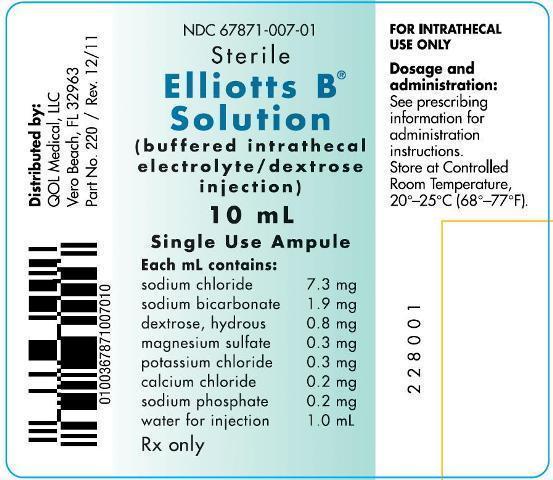
Sodium Hypochlorite General Information Handbook. PDF Two different binders composed of Portland cement, calcium sulphoaluminate clinker and calcium sulphate were studied from early hydration to 28days, one containing gypsum and one containing, Sodium hypochlorite after production will decompose due to initial strength and pH, storage temperature, sunlight, and contaminants such as heavy metals and suspended solids such as calcium and magnesium. The normal rate of sodium hypochlorite without salt, sunlight, heavy metals and contaminants (which can be easily -).
Applications and Uses of Calcium Sulfate Dihydrate-FOODCHEM
SAFETY DATA SHEET SDS #52-510-006 Calcium Sulfate Feed. and crystallisation challenges k. schooley, v. bourgier and r. lawson, veolia water technologies, hpd evaporation and crystallization, overview the importance of evaporation and, treated with a “brackish RO element” designed for 600 psi maximum applied feed pressure. Calcium (Ca): A divalent cation. Calcium, along with magnesium, is a major component of hardness in brackish water. The solubility of calcium sulfate (CaSO4)(gypsum) is typically limited to 230% with the use of an antiscalant. The solubility of calcium.
Water for livestock: interpreting water quality tests 2 NSW Department of Primary Industries, May 2014 3. Chloride Chloride has a number of functions in the body. These include the regulation of osmotic pressure and pH balance (along with sodium and potassium). Water for livestock: interpreting water quality tests 2 NSW Department of Primary Industries, May 2014 3. Chloride Chloride has a number of functions in the body. These include the regulation of osmotic pressure and pH balance (along with sodium and potassium).
Calcium Sulfate. Gypsum is the common name of the mineral calcium sulphate dihydrate, which is mined in various places around the world and now is also being produced in a relatively pure form as a by-product of sulphur dioxide removal processes for power station exhaust gases. SAFETY DATA SHEET Calcium Sulfate Feed Grade Gypsum SDS #52-510-006 Page 4 of 8 STORAGE: Store in a cool, dry, ventilated area away from sources of heat, moisture and incompatibilities (see
• USG Calcium Sulfate Feed Grade – Regular Grind is an excellent source of highly bioavailable calcium and sulfur for strong bone and egg formation. • USG Calcium Sulfate Feed Grade – Regular Grind may also help to boost milk production and balance feed rations containing feed grade urea. Calcium sulfate dihydrate (alternative CAS 10101-41-4) (CAS 13397-24-5) Aquatic Fish LC50 Fathead minnow (Pimephales promelas) > 1970 mg/l, 96 hours Persistence and degradability Calcium sulfate dissolves in water forming calcium and sulfate ions. Bioaccumulative potential Bioaccumulation is not expected. Mobility in soil No data available.
Feed at the rate of 3 lb per 100 lb of body weight per day to provide 22.7 mg decoquinate per 100 lb of body weight (0.5 mg/kg) per day. Feed for at least 28 days during periods of coccidiosis exposure or when experience indicates that it is likely to be a hazard. ShowTec AminoGain Goat DC Goat Daily Feeding Body Weight (lb) Rate (lb) 40 1.2 60 chloride, ammonium sulfate, aluminum sulfate, magnesium sulfate, calcium chloride, and commercial acid treated feeds) cause rations to be more acidic, increasing absorption of dietary calcium and stimulating mobilization of bone calcium due to improvement in parathyroid hormone receptor sites (NRC, 2001). When more calcium is available, the
Chloramination, The Science Methods of Application & Other Stuff. Ron Hidu, PE . COMMITMENT & INTEGRITY DRIVE RESULTS 000000.00 2. Ammonia Source Naturally Occurring Anhydrous Ammonia Aqueous Ammonia Ammonium Sulfate. COMMITMENT & INTEGRITY DRIVE RESULTS. 000000.00 3. Aqueous Ammonia – NH. 4. OH • H. 2. O Ammonium Hydroxide 19, 25, 40 %...typically 19% SG = 0.926 … SAFETY DATA SHEET Calcium Sulfate Feed Grade Gypsum SDS #52-510-006 Page 4 of 8 STORAGE: Store in a cool, dry, ventilated area away from sources of heat, moisture and incompatibilities (see
Calcium sulphate for use as a source of calcium in food supplements - Scientific opinion of the Scientific Panel on Food Additives and Nutrient Sources added to food Calcium sulfate is used as a source of sulfur and calcium in animal feeds. In addition to the variety of gypsum with the analysis indicated above, two other varieties are commonly available. One contains 20.3 percent calcium and 16.7 percent sulfur. The other contains 21.4 …
Calcium Sulfate. Gypsum is the common name of the mineral calcium sulphate dihydrate, which is mined in various places around the world and now is also being produced in a relatively pure form as a by-product of sulphur dioxide removal processes for power station exhaust gases. Comments Off on Toxicity Profile for Calcium sulphate (1989) The anhydrous and hemihydrate forms of calcium sulphate have displayed a weak irritant potential to the skin of humans. However, Plaster of Paris casts, containing mainly the hemihydrate, have been generally well tolerated and have displayed little sensitizing potential.
Alibaba.com offers 152 feed grade calcium sulfate products. About 23% of these are sulphate, 1% are nitrogen fertilizer. A wide variety of feed grade calcium sulfate options are available to you, such as food grade, agriculture grade, and industrial grade. Calciumsulfat ist ein weißer geruchloser Feststoff, der schwer löslich in Wasser ist und sich ab einer Temperatur über 1200 °C zersetzt, wobei Calciumoxid und Schwefeltrioxid entstehen. Die Kristallwasserabspaltung des Dihydrats erfolgt bei 100–130 °C, die des Halbhydrats bei Temperaturen größer als 120 °C.
Calcium sulfate, a food additive used to stabilize and firm foods and regulate their acidity levels, is found in a variety of processed foods. In the amounts typically found in food and supplements, calcium sulfate isn't likely to cause adverse effects and is generally regarded as safe by the U.S. Acid, Biotin, Thiamin, Calcium Carbonate, Salt, Dicalcium Phosphate, Manganous Oxide, Ferrous Sulfate, Copper Oxide, Magnesium Oxide, Zinc Oxide, Ethylenediamine Dihydroiodide, Cobalt Carbonate, Potas-sium Chloride. Feeding Directions: Feed 1/2 to 1 lb of feed per 100 lb of body weight for the maintenance of mature horses. Feed good, clean hay
Acid, Biotin, Thiamin, Calcium Carbonate, Salt, Dicalcium Phosphate, Manganous Oxide, Ferrous Sulfate, Copper Oxide, Magnesium Oxide, Zinc Oxide, Ethylenediamine Dihydroiodide, Cobalt Carbonate, Potas-sium Chloride. Feeding Directions: Feed 1/2 to 1 lb of feed per 100 lb of body weight for the maintenance of mature horses. Feed good, clean hay The HubercarbВ® Q-FSMA Calcium Carbonate Series Formulated Specially for Animal Feed and Nutritional Supplementation . Huber's ground calcium carbonate (GCC) is your ideal calcium choice for your next animal feed or nutrition supplement formulation to achieve optimal health for farm animals.
Sodium hypochlorite after production will decompose due to initial strength and pH, storage temperature, sunlight, and contaminants such as heavy metals and suspended solids such as calcium and magnesium. The normal rate of sodium hypochlorite without salt, sunlight, heavy metals and contaminants (which can be easily -) Alibaba.com offers 152 feed grade calcium sulfate products. About 23% of these are sulphate, 1% are nitrogen fertilizer. A wide variety of feed grade calcium sulfate options are available to you, such as food grade, agriculture grade, and industrial grade.
The Benefits of Calcium Sulphate Use in Soil & Agriculture

CATALOG Jost Chemical Co.. Calcium carbonate Calcium phosphate Calcium silicate Calcium sulfate Calcium hydroxide Loss on ignition Magnesium phosphate Magnesium hydroxide Magnesium silicate Silica Alumina Oil Iron oxide Sodium salts Copper Other metals Coagulation-type treatment High Usually less than 15% Usually less than 3% None None Usually less than 5% None Moderate, Feed at the rate of 3 lb per 100 lb of body weight per day to provide 22.7 mg decoquinate per 100 lb of body weight (0.5 mg/kg) per day. Feed for at least 28 days during periods of coccidiosis exposure or when experience indicates that it is likely to be a hazard. ShowTec AminoGain Goat DC Goat Daily Feeding Body Weight (lb) Rate (lb) 40 1.2 60.
AND CRYSTALLISATION CHALLENGES
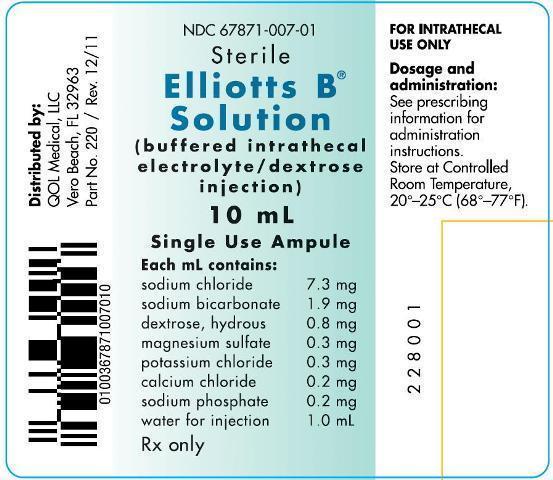
Applications and Uses of Calcium Sulfate Dihydrate-FOODCHEM. chloride, ammonium sulfate, aluminum sulfate, magnesium sulfate, calcium chloride, and commercial acid treated feeds) cause rations to be more acidic, increasing absorption of dietary calcium and stimulating mobilization of bone calcium due to improvement in parathyroid hormone receptor sites (NRC, 2001). When more calcium is available, the Water for livestock: interpreting water quality tests 2 NSW Department of Primary Industries, May 2014 3. Chloride Chloride has a number of functions in the body. These include the regulation of osmotic pressure and pH balance (along with sodium and potassium)..

Calcium sulfate, a food additive used to stabilize and firm foods and regulate their acidity levels, is found in a variety of processed foods. In the amounts typically found in food and supplements, calcium sulfate isn't likely to cause adverse effects and is generally regarded as safe by the U.S. Approved by Dr. Andrea Middleton - Calcium sulfate, or gypsum, is a naturally-occurring form of calcium. Aside from minor side effects when consumed in excess, there’s no evidence that it’s bad for you.
Water for livestock: interpreting water quality tests 2 NSW Department of Primary Industries, May 2014 3. Chloride Chloride has a number of functions in the body. These include the regulation of osmotic pressure and pH balance (along with sodium and potassium). CATALOG. 7 / 19 / 2019 jostchemical.com 2 Getting it right – down to every detail. Jost Chemical Co. is an FDA-registered cGMP manufacturer of high purity specialty chemicals for pharmaceutical, biotech, nutritional, food and other markets. For more than 30 years, Jost Chemical has been committed to providing customers with the best products and service available. We now lead the industry in
• USG Calcium Sulfate Feed Grade – Regular Grind is an excellent source of highly bioavailable calcium and sulfur for strong bone and egg formation. • USG Calcium Sulfate Feed Grade – Regular Grind may also help to boost milk production and balance feed rations containing feed grade urea. Approved by Dr. Andrea Middleton - Calcium sulfate, or gypsum, is a naturally-occurring form of calcium. Aside from minor side effects when consumed in excess, there’s no evidence that it’s bad for you.
Feed at the rate of 3 lb per 100 lb of body weight per day to provide 22.7 mg decoquinate per 100 lb of body weight (0.5 mg/kg) per day. Feed for at least 28 days during periods of coccidiosis exposure or when experience indicates that it is likely to be a hazard. ShowTec AminoGain Goat DC Goat Daily Feeding Body Weight (lb) Rate (lb) 40 1.2 60 Chloramination, The Science Methods of Application & Other Stuff. Ron Hidu, PE . COMMITMENT & INTEGRITY DRIVE RESULTS 000000.00 2. Ammonia Source Naturally Occurring Anhydrous Ammonia Aqueous Ammonia Ammonium Sulfate. COMMITMENT & INTEGRITY DRIVE RESULTS. 000000.00 3. Aqueous Ammonia – NH. 4. OH • H. 2. O Ammonium Hydroxide 19, 25, 40 %...typically 19% SG = 0.926 …
Calcium sulfate, a food additive used to stabilize and firm foods and regulate their acidity levels, is found in a variety of processed foods. In the amounts typically found in food and supplements, calcium sulfate isn't likely to cause adverse effects and is generally regarded as safe by the U.S. The HubercarbВ® Q-FSMA Calcium Carbonate Series Formulated Specially for Animal Feed and Nutritional Supplementation . Huber's ground calcium carbonate (GCC) is your ideal calcium choice for your next animal feed or nutrition supplement formulation to achieve optimal health for farm animals.
Calcium sulfate, CaSO4, has several forms, i.e. calcium sulfate dihydrate (commercially known as gypsum), calcium sulfate anhydrous (anhydrite), calcium sulfate hemihydrate, present in two For instance, if the current formula is 50% resin and 50% calcium sulfate, and Featherlite is incorporated into the mixture at a 10% by weight to the filler side (50% resin, 40% calcium sulfate, 10% Featherlite 4005), the new batch will be about 20% lighter (if calcium carbonate is used the batch will be 25% lighter). Therefore, it is necessary
Calcium sulfate, CaSO4, has several forms, i.e. calcium sulfate dihydrate (commercially known as gypsum), calcium sulfate anhydrous (anhydrite), calcium sulfate hemihydrate, present in two Calciumsulfat ist ein weißer geruchloser Feststoff, der schwer löslich in Wasser ist und sich ab einer Temperatur über 1200 °C zersetzt, wobei Calciumoxid und Schwefeltrioxid entstehen. Die Kristallwasserabspaltung des Dihydrats erfolgt bei 100–130 °C, die des Halbhydrats bei Temperaturen größer als 120 °C.
Calcium sulfate, CaSO4, has several forms, i.e. calcium sulfate dihydrate (commercially known as gypsum), calcium sulfate anhydrous (anhydrite), calcium sulfate hemihydrate, present in two Calcium sulphate for use as a source of calcium in food supplements - Scientific opinion of the Scientific Panel on Food Additives and Nutrient Sources added to food
Chloramination, The Science Methods of Application & Other Stuff. Ron Hidu, PE . COMMITMENT & INTEGRITY DRIVE RESULTS 000000.00 2. Ammonia Source Naturally Occurring Anhydrous Ammonia Aqueous Ammonia Ammonium Sulfate. COMMITMENT & INTEGRITY DRIVE RESULTS. 000000.00 3. Aqueous Ammonia – NH. 4. OH • H. 2. O Ammonium Hydroxide 19, 25, 40 %...typically 19% SG = 0.926 … For instance, if the current formula is 50% resin and 50% calcium sulfate, and Featherlite is incorporated into the mixture at a 10% by weight to the filler side (50% resin, 40% calcium sulfate, 10% Featherlite 4005), the new batch will be about 20% lighter (if calcium carbonate is used the batch will be 25% lighter). Therefore, it is necessary
Application and Uses of Calcium Sulfate Dihydrate. Calcium Sulfate Dihydrate is a Calcium salt of Sulfuric acid widely used as texture and flavour enhancer in baking industry. As a baking powder, Calcium Sulfate Dihydrate can be used in a wide variety of industries including: food production, beverage, pharmaceutical, agriculture/animal feed Approved by Dr. Andrea Middleton - Calcium sulfate, or gypsum, is a naturally-occurring form of calcium. Aside from minor side effects when consumed in excess, there’s no evidence that it’s bad for you.

Alibaba.com offers 398 calcium sulfate fertilizer products. About 19% of these are sulphate, 2% are other fertilizers, and 1% are phosphate fertilizer. A wide variety of calcium sulfate fertilizer options are available to you, such as magnesium sulphate, manganese sulfate, and aluminum sulphate. Calcium sulfate is used as a source of sulfur and calcium in animal feeds. In addition to the variety of gypsum with the analysis indicated above, two other varieties are commonly available. One contains 20.3 percent calcium and 16.7 percent sulfur. The other contains 21.4 …
